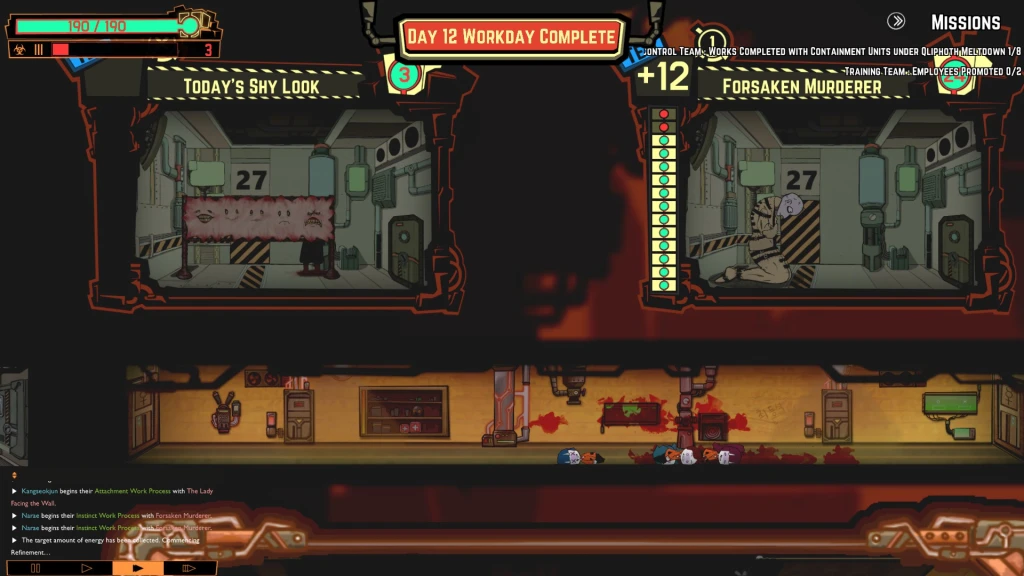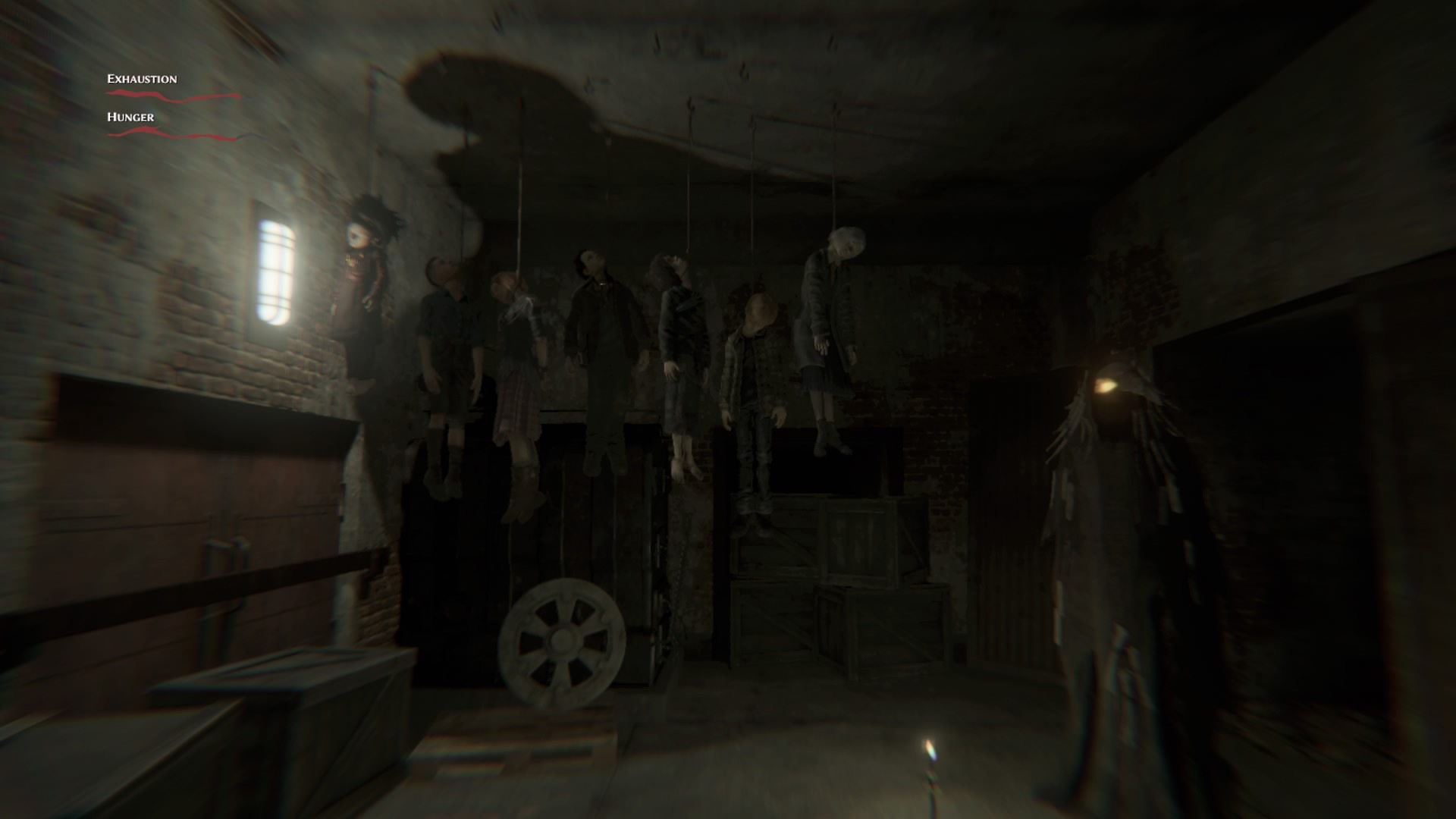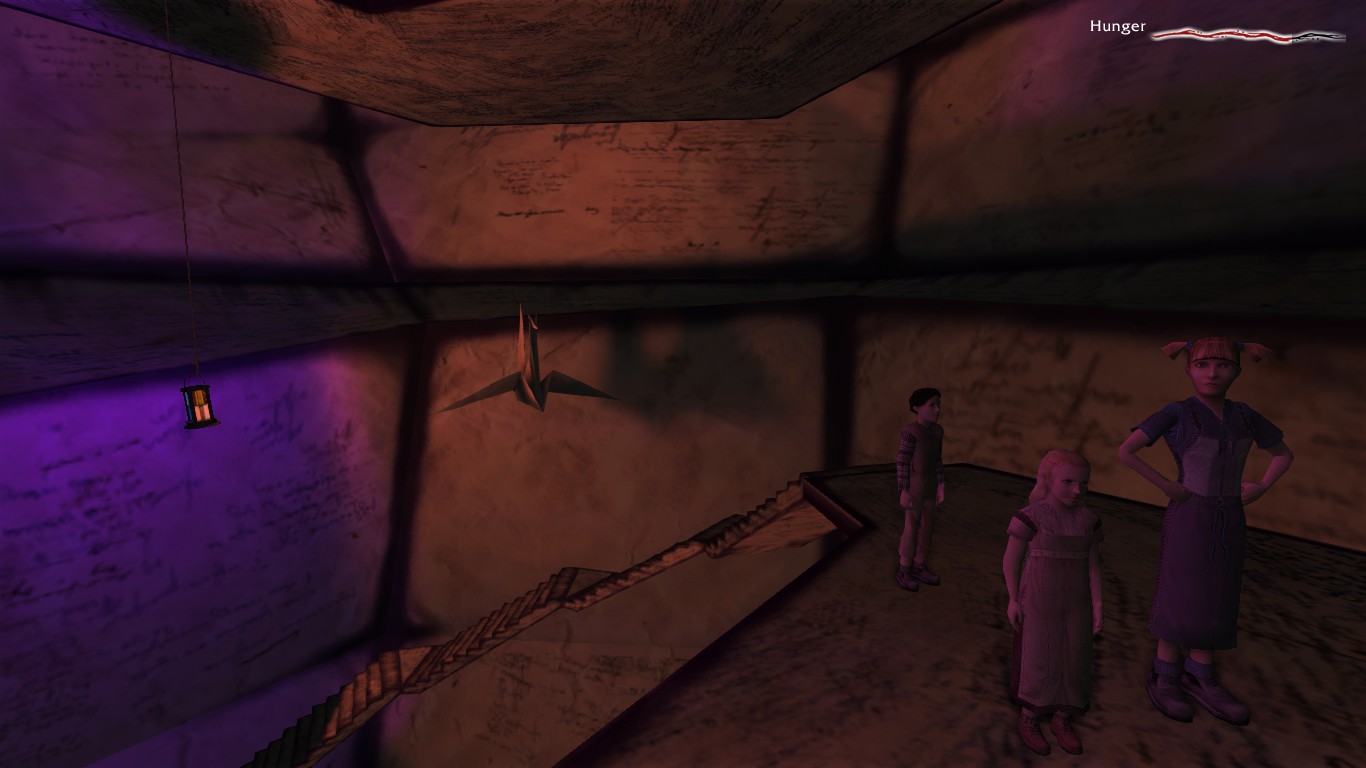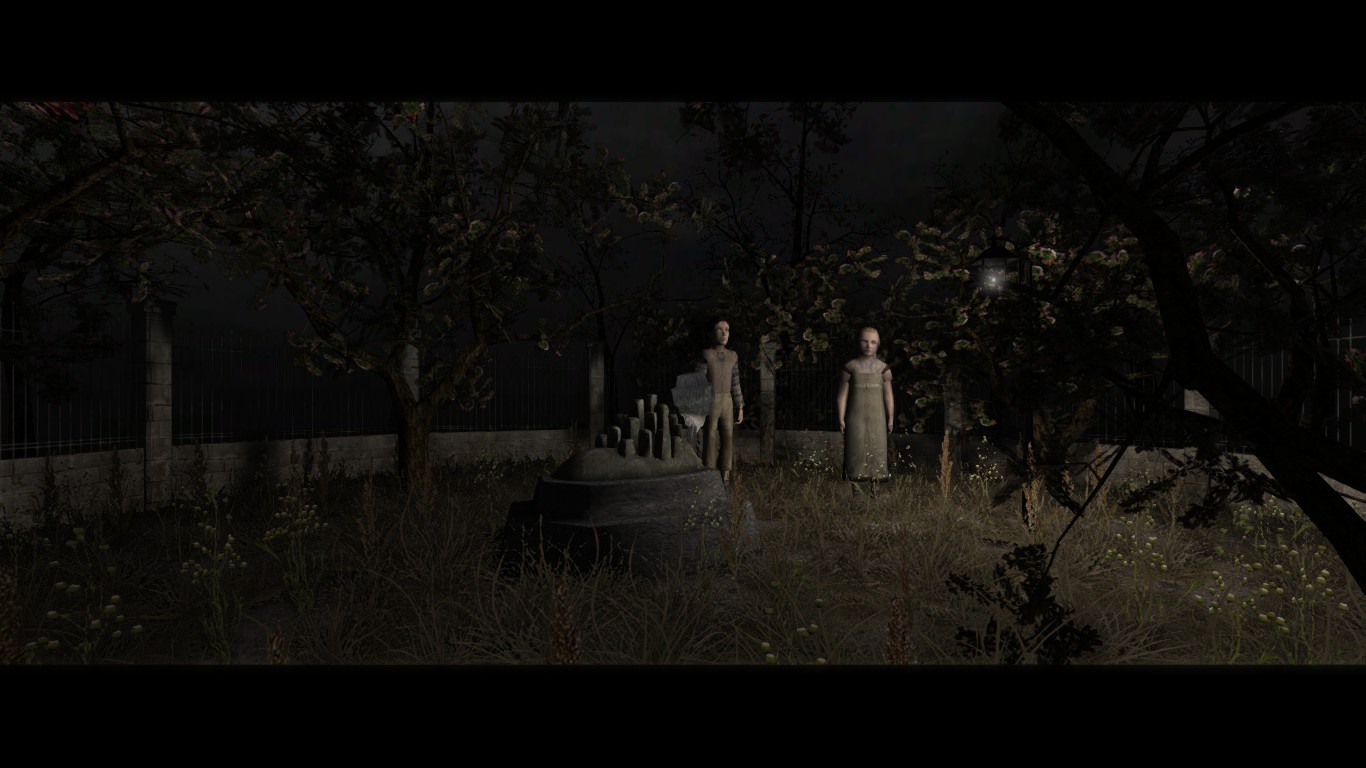Lobotomy Corporation is probably the closest example to a SCP game, without being exactly based on any SCP. The Korean game is a management simulation where the player is in charge of developing and maintaining an electric company. However, there is only a small caveat in this job: the company generates energy from imprisoned anomalies. From abnormal fairytales to grotesque abominations, the facility has more than 70 different creatures to work with. And the more incomprehensible and dangerous an anomaly is, the higher the energy produced. Lobotomy Corporation is a game imbued with lore, where every anomaly has tons of information to unlock by understanding and interacting more with them. However, the smallest error could lead to catastrophic reactions since the anomalies can breach their cell to bring havoc in the facility. And we are not talking of normal attacks, but of a multitude of devastating events, from a bird-like creature judging with a scale and hanging all the sinners to a grotesque “Santa Klaus” throwing guts and organs around as gifts while sending insane the workers.
As manager of this company, the AI helping you will immediately tell you to not get attached to the employees. They are disposable, and a lot of them will brutally die, committing suicide after a panic attack or being brutally ripped by a breached anomaly. Between all this madness, indifference, and brutality, how will the manager survive? Of course thanks to the Cognition Filter. If you see any screenshots of Lobotomy Corporation, you realize how the style is far more cuter than creepy. The employees look like cute dolls, and also several abnormalities are far more adorable than they should be. Sure, the game can get quite violent, brutal, and disturbing, but while still featuring this cute art-style.

The Cognition Filter enters at this point. During one of the many cutscenes, the player (or manager) will suddenly see a far more brutal image of dead employees, with more realistic art. The AI suddenly apologizes, explaining how there was a glitch in the filter. So here lies the absolutely shocking truth of Lobotomy Corporation, a brilliant twist changing the entire view of the game. Even the manager inside the game sees the employees only as cute dolls on their screen, and this is because of the Cognition Filter. The cartoonish style is not a simple tool, but the application of the Cognition Filter focused on protecting and “de-sensitizing” the manager, and with them the player. Instead of seeing real employees brutally killed every single day, the manager will only see those dolls dying. But this is only a construct of the AIs to make the employees feel even more disposable, a construct to “protect” the sanity of the manager, which will mind less every death. This also implies that the violence and brutality of the game, including several disturbing ways for the anomalies to kill, is far less shocking than reality. Meaning that deaths are far more brutal than how they appear.

The Cognition Filter is in effect for everything, not only the employees but especially the anomalies. So if their true appearance is filtered to be less disturbing, which is the real form of disturbing beings able to send the weak employees insane just by looking at them, such as Nothing There or the Mountain of Smiling Bodies? This thinking goes both ways, not only to imagine the even more disturbing look of the most grotesque abominations, but also to think if the “cute” anomalies such as Laetitia or the Queen of Hatred have indeed that appearance. With a very brief description, the Cognition Filter created infinite possibilities for reimagining the game, making the player question what they saw till now. This reminds me of Silent Hill 3, specifically the famous Vincent’s quote “Are they monsters to you?” that still haunts players. With a very simple sentence, Vincent makes the player question the entire game, where probably they were killing people and not monsters.
Sometimes, in the disturbing world of Lobotomy Corporation, even the Cognition Filter is not enough to protect the manager’s mind. For this reason, other forms of safety measures are in use, including redacting texts and images. An example is Nothing There, a terrifying and grotesque abomination made of random body parts stitched together. Oh, and this without considering how the creature can literally wear the skin of the killed people, and transform its body into an even more grotesque humanoid form when breaching out of containment. Even in its disturbing appearance, the Cognition Filter is still able to provide a “cuter” version of this abomination. However, when checking the information sheet of Nothing There, the portrait in the encyclopedia, usually a close-in of the creature, is absent. Instead, an empty image saying “DO NOT OPEN, this [REDACTED]” replaces it. This could probably imply that even the Cognition Filter is not strong enough to shield the manager’s mind from a close-up of the grotesque creature.

Another small example, this time focused on redacting the text, is about Laetitia. This anomaly takes the appearance of a little girl dressed in Gothic clothes. She is always happy and doesn’t want to escape. However, she is constantly talking about how she likes to give gifts to her friends, and how everybody likes her. She is really obsessed with giving her gifts to people. However, when reading the guidelines about Laetitia, the information about her gift or friend is always redacted. But when the guidelines say about a XXX that burst out of somebody’s body, you surely know why her gift got redacted. In fact, people gifted by Laetitia will have a grotesque spider full of eyes bursting out of their bodies, in an unexpected and grotesque scene.

However, I left the most direct and disturbing example of an ineffective Cognition Filter for last. CENSORED is an abnormality so disturbing that even the Cognition Filter is not enough to keep the mind of the manager intact. For this reason, cameras recording CENSORED have an extra filter, and the body of the creature is never shown. Instead, a group of censored bars cover the creature’s body, hiding the abomination but still shaping its body to provide an extra layer of forbidden knowledge. Only the toughest employee can survive the sight of the creature without going insane, and it is implied that several managers didn’t survive the view of the creature before applying the censored bars. When CENSORED breaches out, it will assume a more four-legged anatomy. When it kills an employee, the scene is so brutal that it is also completely censored, with only an explosion of guts and blood visible. After that, a smaller CENSORED creature is generated. The most disturbing detail? It is implied that during the killing, CENSORED is breeding/reproducing using the victims… definitively something that no Cognition Filter can shield you from.








































